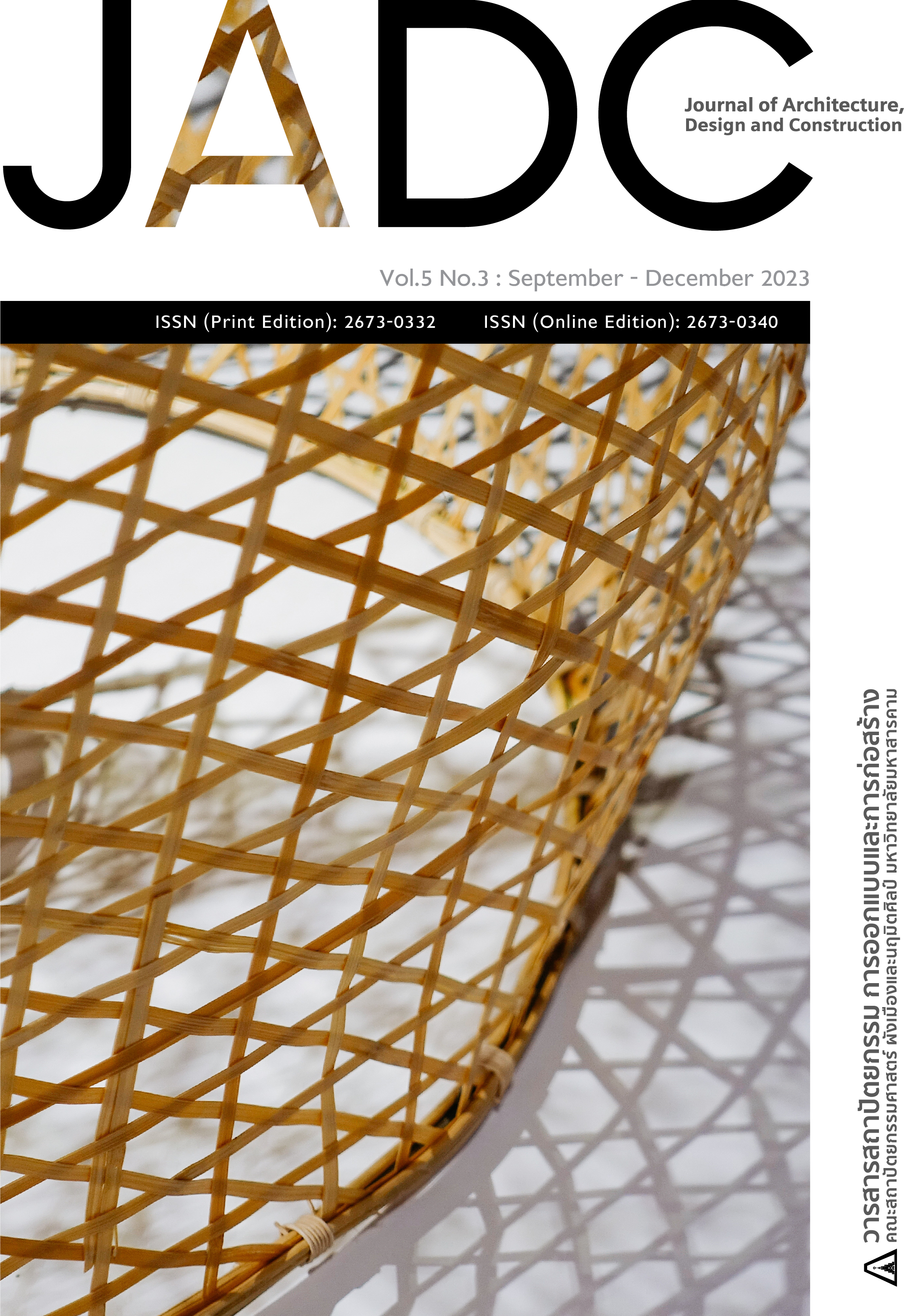Designing School Desk Set and Teaching Media to Develop Ethics and Anti-Corruption Awareness Learning for Children
Main Article Content
บทคัดย่อ
The research aimed to create innovative school furniture design, including a desk set with the provision of teaching media for young school-age children aged 3-7 in developing their morality and ethics, as well as raising awareness against corruption. The study aimed to design innovative school furniture with instructional media for young children, promoting morality, ethics, and corruption awareness, and to test and evaluate the newly created furniture. The research employed a mixed-method approach (qualitative-quantitative research). The research was conducted through qualitative methods, including observation, interviews, and questionnaires, to gather data. The results from these data sets were used to design a product using the Analytic Hierarchy Process principle. The study utilized quantitative research methods, including efficiency testing and satisfaction surveys, both before and after product use. The study's qualitative findings indicate that the use of high-quality instructional media can stimulate idea formation and stimulate children's imagination. The recommendation was made that a set of school furniture, including a table and chair, would be the most effective instructional materials to boost children's learning interest. Based on the satisfaction evaluations, the product was worth using because it had a low production cost and was safe. The raters' satisfaction score was an average of 4.06. The average satisfaction increased to a statistically significant 0.1 level with Sig 0.18. The study found that new school furniture did not significantly affect the perception of ten wholesome actions among 3-7-year-olds in the short term, but increased perceptions if used for longer periods
Downloads
Article Details

อนุญาตภายใต้เงื่อนไข Creative Commons Attribution-NonCommercial-NoDerivatives 4.0 International License.
บทความที่ได้รับการตีพิมพ์เป็นลิขสิทธิ์ของวารสารสถาปัตยกรรม การออกแบบและการก่อสร้าง คณะสถาปัตยกรรมศาสตร์ ผังเมืองและนฤมิตศิลป์ มหาวิทยาลัยมหาสารคาม
เอกสารอ้างอิง
Anders, W.(2015), Identity References in Product Design: An Approach for Inter-relating Visual Product Experience and Brand Value Representation, Proceedings of the International Conference on Applied Human Factors and Ergonomics (AHFE 2015) and the Affiliated Conferences. vol.3, (2118-2125), Lund University, Sweden.
Walker, S. (2006) Object lesson: Enduring Artefacts and Sustainable Solutions. Design Issue. 22(1), 20-31.
Chuachetton, R. (1996). Use of Role-Play Activities to Enhance Assertive Behaviors of Preschool Children (Master’s Independent Study).
Doungdao, K. (2003). Using Group Activities to Promote Prathom Suksa 6 Students’Discipline, Bandonmoon [Suwannasaratbumrung] School, Phrae Province (Master’s Independent Study).
Jellen, G., and Urban. K. (1986, Spring). Test For Creative Thinking Drawing Production. The Creative Child and Adult Quarterly. 11(8), 107-155.
Jean Piaget. (1983). Handbook of child psychology, Vol.1. New York: Wiley.
Yamane,T.(1973). Statistics: an Introductory Analysis. Tokyo: Harper International Edition
Walker, S. (2006). Object lesson: Enduring artefacts and sustainable solutions. Design Issue. 22(1), 20-31.


